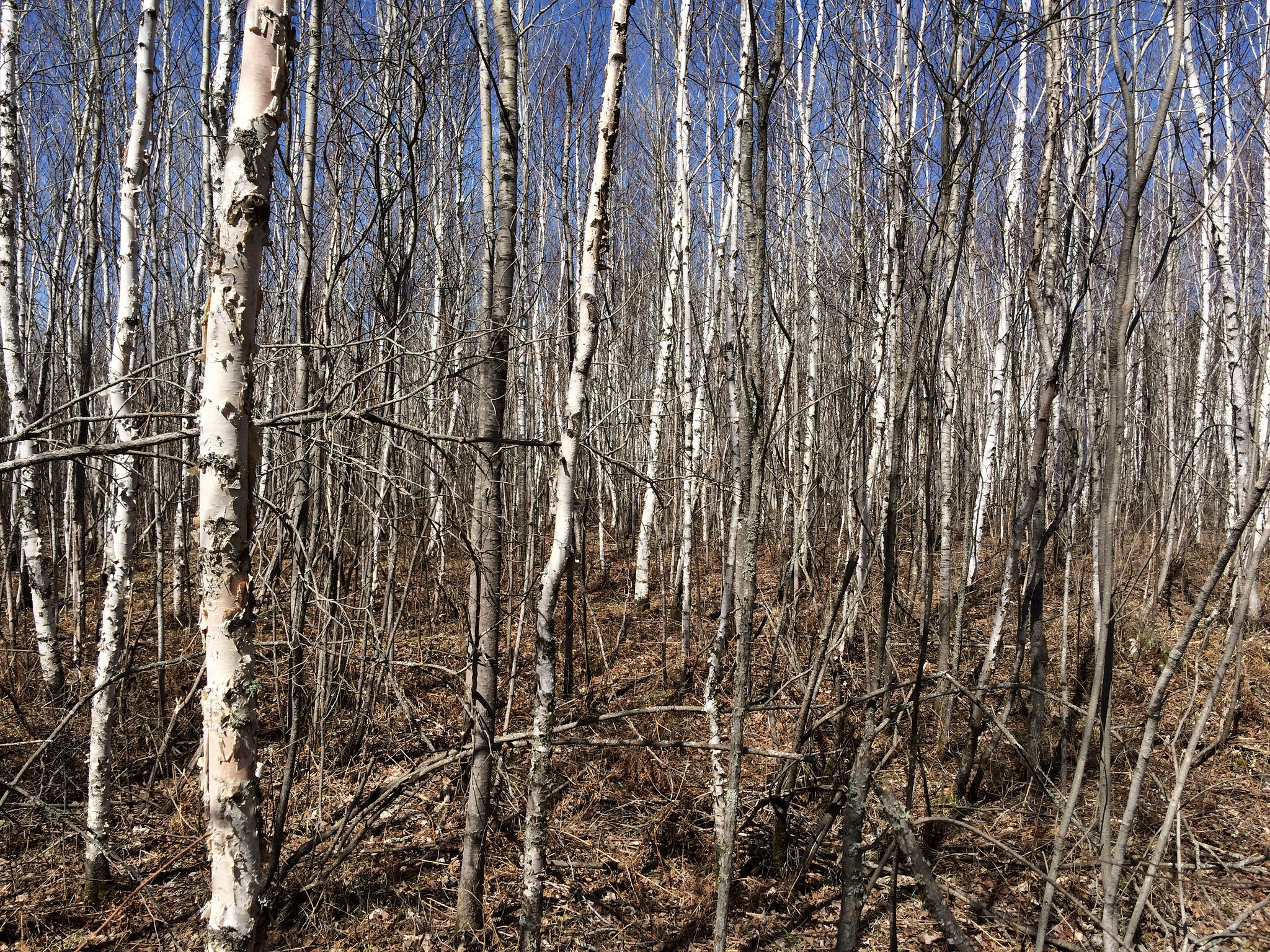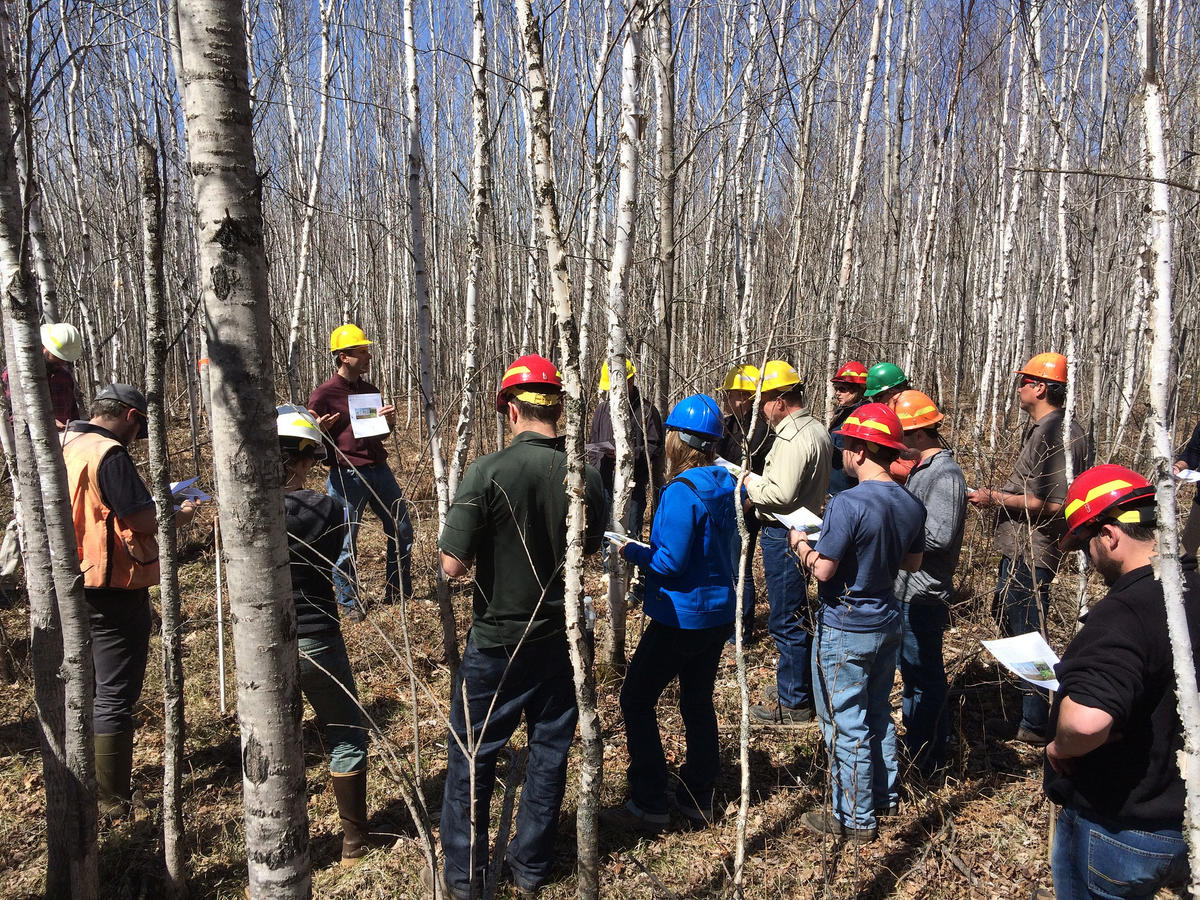Overview
Uniform shelterwood implemented in 1979 to establish paper birch regeneration.
Silviculture Objective(s)
To regenerate paper birch using the uniform shelterwood method.
Pre-treatment stand description and condition
Stand establishment and management history:
No data available.
Pre-treatment species composition:
Dominated by birch, aged apx 60 yrs.
Pre-treatment growth and stocking:
Total stand basal area was 83 ft2/ac, and site index for paper birch was 54 ft at age 50.
Pre-treatment forest health issues:
None noted.
Silviculture Prescription
To implement the shelterwood method to regenerate paper birch in the Lakes States.
What actually happened during the treatment
Excerpted from Perala and Alm (1989) Regenerating Paper Birch in the Lake States with the Shelterwood Method. Northern Journal of Applied Forestry. 6:151-153.
In summer 1979 a two-cut uniform shelterwood study was begun in a 60-year-old paper birch stand on a Cloquet sandy loam at the Cloquet Forestry Center of the University of Minnesota, College of Forestry, in north central Minnesota. Total stand basal area was 83 ft2/ac, and site index for paper birch was 54 ft at age 50. Four 2.5-ac blocks were partially logged either full tree or tree length. Each block was quartered into 0.6-ac treatment plots having residual densities ranging from 8% to 64% crown cover and 8 to 87 ft2/ac basal area. Late the following summer, two plots in each block were sprayed beneath the canopy with 2 qt/ac of glyphosate herbicide (Roundup© ) to control competing vegetation, mostly aspen suckers and herbs. Glyphosate was chosen because it has minimal soil activity and would not interfere with the eventual crop of birch seedlings. Seven weeks later (last week in October 1980) the entire shelterwood was cross-disced. The shelterwood was removed one block a year, beginning in the winter 3 years after site preparation.
May to August rainfall ranged from 11.5 to 15.5 in. during the 5-year study, compared to the 30-year mean of 15.0 in. At least 1 month in each of the first 4 years had a drought (consecutive days with less than 0.04 in. rain) exceeding 13 days.
Opening the stand and injuring the roots by discing caused much crown dieback and killed a few trees. Nevertheless, paper birch seed production was the same per unit basal area in both the shelterwood and the uncut birch stand. Virtually no seed was produced during the year of site preparation nor 2 years later in 1982. A near bumper crop having 40% germination was dispersed in the shelterwood in 1981, and average crops in 1983 and 1984.
Post-treatment assessment
From Puettmann and Zenner (2008), NJAF: In the fall of 1982, 95% of the germination plots were stocked with birch, and total seedling density was 222 per milacre, of which 14 per milacre were 2-year-olds with 63% stocking, and the rest were 1-year-olds (Perala and Alm 1989). In the fall of 1985, total paper birch seedling density had declined to 22 per milacre with 68% total stocking, and the oldest birch seedlings averaged 34 in. tall. In the winter of 1985/1986, the shelterwood overstory was removed.

Figure 2:
Plans for future treatments
Spacing trials as described in the companion case, CFC Paper Birch Spacing Trials.
Costs and economic considerations
Not noted.
Other notes
From Perala and Alm (1979): A two-cut uniform shelterwood having 20 to 40% crown cover can be used to regenerate paper birch. But any system using narrow shaded clearcut strips or shelterwood strips disced within 2 years after a good seed crop may be as good or even better. The object of discing is three-fold: (1) incorporate organic matter, CWD in particular, into mineral soil, (2) control competing vegetation, and (3) drill some of the birch seed in the forest floor to optimum depth (1/8 to 1/4 in.) for germination and seedling establishment. Skill in site preparation is critical because too much effort will bury seed too deeply but too little will not mix organic matter with mineral soil nor control competing vegetation. Two passes with a disc at right angles seems about right although additional research is needed to determine optimum disc size, spacing, and arrangement.
Submitted by
Eli Sagor
Eli Sagor manages the University of Minnesota’s Sustainable Forests Education Cooperative, based at the Cloquet Forestry Center. In that role, he organizes and delivers continuing education programs related to forest ecology and management for professional natural resource managers. He has been with the University of Minnesota since March of 2000.
